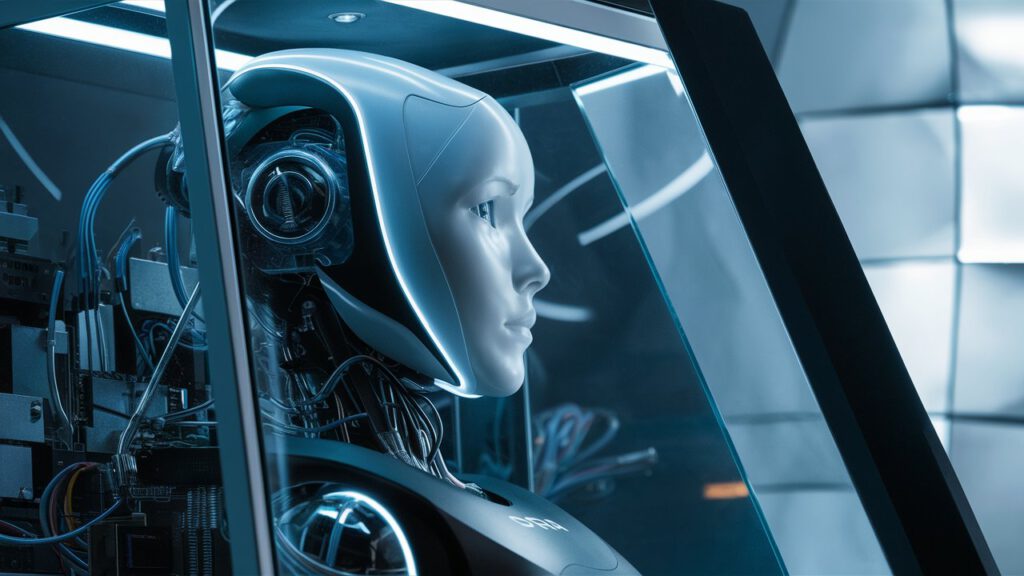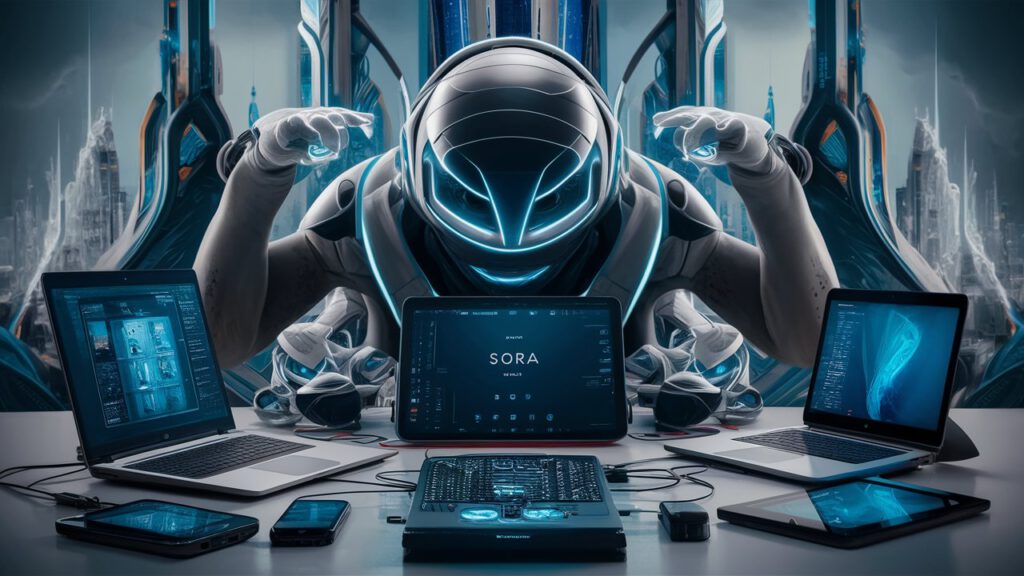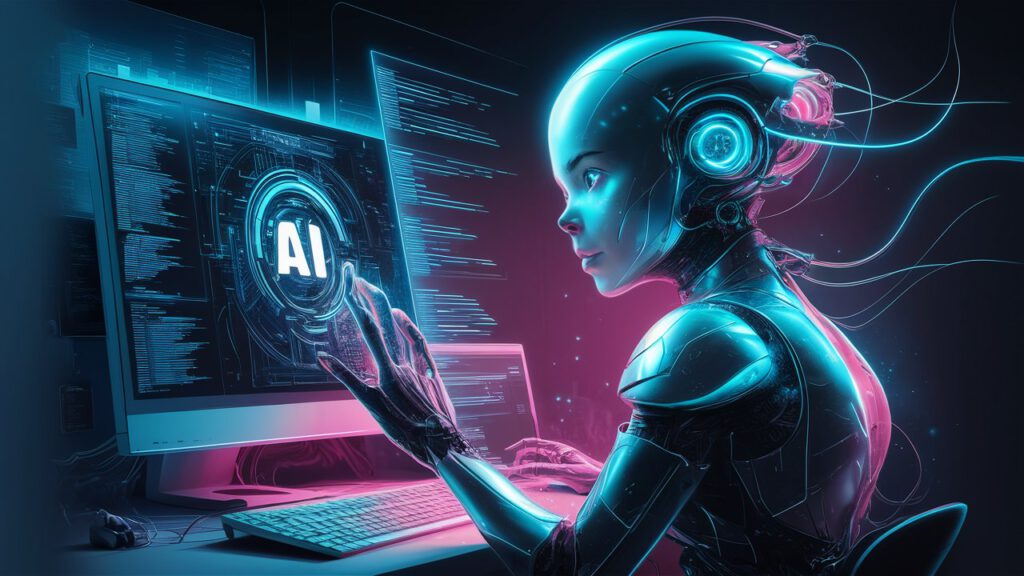
Sora AI is a new text-to-video model from OpenAI. It’s causing a lot of excitement in the tech world. Many people are curious about how it works. In this blog post, we’ll explore this in detail. We’ll break down its technology and explain how it creates videos from text.
What is Sora AI?
Sora AI is an artificial intelligence system. It can create videos based on text descriptions. You type in what you want to see, and Sora makes a video of it. This is a big step forward in AI technology. Before Sora, AI could make still images from text. Now, it can make moving images too.
The Basics of How Sora Works
Sora uses a type of AI called a generative model. This means it can create new content. It doesn’t just search for existing videos. Instead, it makes brand-new videos from scratch.
Sora is trained on a huge amount of video data. It learns patterns from this data. When you give it a text prompt, it uses what it learned to create a video. The video matches your description.
Key Technologies Behind Sora

Sora uses several advanced AI technologies. Let’s look at some of them:
1. Transformer Architecture: This is the backbone of Sora. Transformers are good at understanding the context in data. They help Sora understand the meaning of your text prompt.
2. Diffusion Models: These help Sora create high-quality images. Diffusion models start with random noise. They slowly refine this noise into a clear image. Sora uses this for each frame of the video.
3. Latent Space: This is like a compressed version of video data. Sora works in this latent space. It’s more efficient than working with full video data.
4. Temporal Consistency: This keeps things consistent across video frames. It makes sure objects and movements look smooth and natural.
The Process of Video Generation
Here’s a step-by-step look at how Sora creates a video:
1. Text Input: You type in a description of the video you want.
2. Text Understanding: Sora’s AI analyzes your text. It figures out what you’re asking for.
3. Planning: Sora plans out the video. It decides what should happen in each part.
4. Frame Generation: Sora creates each frame of the video. It uses diffusion models for this.
5. Motion Creation: Sora adds movement between frames. This turns still images into a moving video.
6. Refinement: Sora checks the video for consistency. It makes sure everything looks right.
7. Output: Sora gives you the final video.
The Role of Training Data

Sora’s abilities come from its training data. This data includes millions of videos and text descriptions. The AI learns from all this information. It learns about objects, actions, and scenes. It also learns how things move and change over time.
The quality of Sora’s output depends on its training data. Better data leads to better videos. OpenAI is careful about what data it uses. They want Sora to create good videos without copying copyrighted content.
Challenges and Limitations
Sora is impressive, but it’s not perfect. Here are some challenges it faces:
1. Complex Scenes: Sora can struggle with very detailed or complex scenes.
2. Long Videos: Right now, Sora makes short videos. Longer videos are more challenging.
3. Specific Details: Sometimes Sora misses small details from the text prompt.
4. Realism: While Sora’s videos look good, they’re not always 100% realistic.
5. Ethical Concerns: There are worries about Sora being used to create fake videos.
The Future of Sora AI
Sora is still new. OpenAI is working to improve it. In the future, Sora might be able to:
– Make longer videos
– Create more realistic footage
– Understand more complex prompts
– Generate videos with sound
Potential Applications

Sora has many potential uses:
1. Entertainment: It could help create special effects or animated shorts.
2. Education: Sora could make educational videos on any topic.
3. Advertising: Businesses could quickly create video ads.
4. Game Development: Game designers could use Sora to create cutscenes or backgrounds.
5. Art: Artists could use Sora as a new creative tool.
Comparing Sora to Other AI Models
Sora is different from other AI models in a few ways:
– It makes videos, not just images.
– It can handle longer and more complex prompts.
– Its videos have better continuity and flow.
However, other models are still better at some things. For example, some are faster or use less computing power.
The Impact of Sora on AI and Society
Sora is a big step forward in AI. It shows that AI can create complex, moving visuals. This could change many industries. It might affect jobs in video production and animation. It also raises questions about the future of visual media.
There are also concerns about Sora. People worry about fake videos and misinformation. OpenAI is thinking about these issues. They’re working on ways to use Sora responsibly.
Q1. Can anyone use Sora AI right now?
A1. No, Sora is not publicly available yet. OpenAI is still testing it.
Q2. How long are the videos Sora can create?
A2: Currently, Sora can create videos up to one minute long.
Q3. Can Sora create videos with sound?
A3: Not yet. The current version of Sora creates silent videos.
Q. Can Sora understand any language?
A6: Sora was trained primarily in English, but it may understand some other languages too.
Q5.How much computing power does Sora need?
A5: Sora needs a lot of computing power. It’s not designed to run on personal computers.
Q6: How does OpenAI plan to prevent misuse of Sora?
A6: OpenAI is developing ethical guidelines and technical safeguards for Sora’s use.
Conclusion
Sora AI is an exciting new technology. It uses advanced AI to turn text into video. While it has limitations, it shows the growing power of AI. As Sora improves, it could change how we create and consume visual content. It’s important to watch how this technology develops and how it’s used.

Rob Williams is a tech enthusiast and digital content creator with a passion for emerging technologies. With over five years of experience in the field of digital marketing and content production, Rob has been closely following the developments in AI and its applications in media creation. When not writing about the latest in AI, Alex enjoys experimenting with new digital tools and sharing insights with the online tech community.